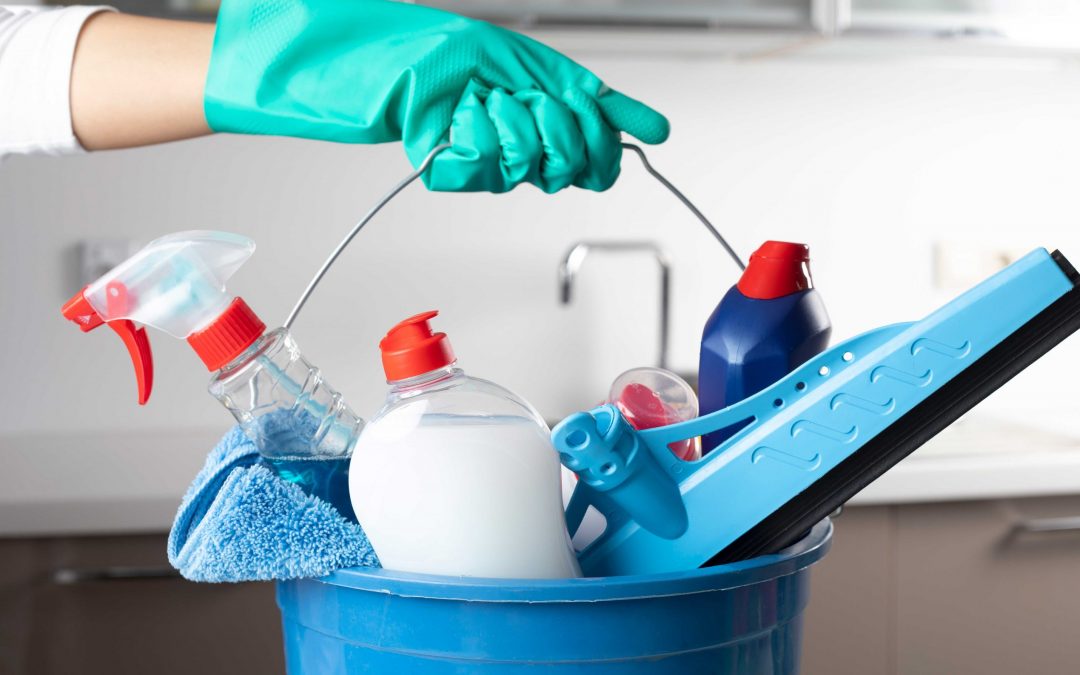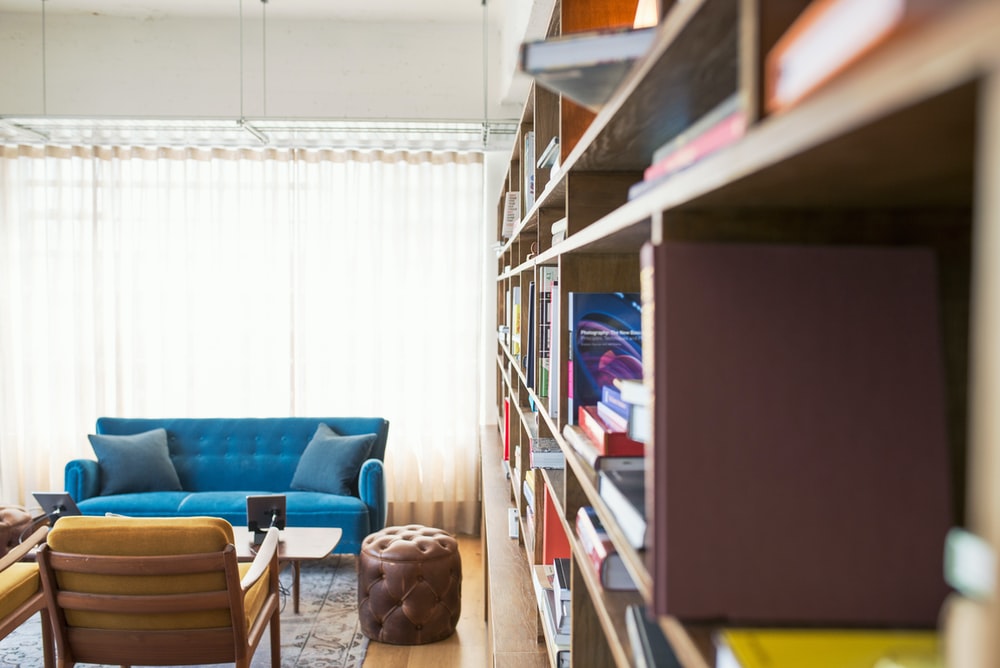
by Dawn | May 5, 2020 | Uncategorized
The emergence of COVID-19 has taken the world by surprise and affected the routines, procedures, and activities of people across the globe. Like most professionals, landlords must continue running their businesses despite the pandemic. This may mean adjusting pre-existing practices or even thinking of new and creative ways to continue forward.
The main goal, of course, is to ensure the safety of current tenants, prospective renters, all staff members, and landlords, while also filling vacancies, updating leases, and collecting timely payments.
The rule of thumb here is to complete all communications and transactions online when possible, and exercise proper safety precautions when in-person interactions cannot be avoided, but let’s break it down further.
Know Your State’s Guidelines
The first and most important step is to be aware of your state’s laws and recommendations before proceeding forward. Some states have deemed real estate to be an essential service. In this case, landlords are likely able to continue in-person showings of their vacancies if they so desire.
Other states, however, have decided that real estate is not an essential service, which means that the use of online tools is the only way to conduct showings for prospective tenants.
There are pros and cons in both situations. The most notable pro when it comes to states that are able to continue face-to-face showings is that they don’t have to go through the hassle of learning new virtual ways of showing their property. Even so, the drawback to conducting solely in-person showings is that some renters may not want to come physically see a vacancy out of the fear of contagion. Adopting new virtual methods of showings may increase your market of potential tenants due to the safe and accessible manner of the technology.

by Dawn | May 5, 2020 | Uncategorized
Moving is often dubbed as challenging due to the amount of effort involved, right from planning a move to packing, moving, unpacking, cleaning, and other issies.
If you were scheduled to move into a new place during the coronavirus pandemic, it is no less challenging. First, you might want to postpone your move. But what if you cannot?
Here are a few cleaning tips to make your move a little easier. Luckily, you do not need to spend hours sanitizing your possessions. With the right cleaning and sanitation methods, your task can become easier.
Cleaning Tips for Moving During Coronavirus Pandemic
According to the CDC, the prime cause of COVID-19 transmission is through close contact with other people. This occurs through respiratory droplets. Unfortunately, the virus continues to survive for days on different surfaces. Cleaning and sanitizing your new home thus becomes a priority when making a move during a coronavirus pandemic.
Cleaning, disinfecting, and sanitizing are meant to remove dirt and impurities and kill germs from surfaces. By disinfecting your new property during a move, you can reduce the risk of spreading viral infection.
Keep essential cleaning supplies handy
While the need to sanitize your property cannot be harped on much, you need to have the right cleaning chemicals on-hand during the move.
Since COVID-19 is an enveloped virus, you can kill it easily with appropriate house cleaning supplies. However, you need the right cleaning material, including EPA-registered disinfectants, to kill the virus on different surfaces. However, a DIY disinfectant solution might come in handy too. You may use bleaching solution or surgical spirit for disinfecting surfaces.
Ethanol in spirit is known to kill the virus within seconds. If a disinfectant product label claims to kill SARS virus, influenza, and RSB, then it might be a potent weapon against COVID-19.
When making a move to a new place, make sure you have the following cleaning supplies handy:
- Hydrogen peroxide
- Disinfectant spray
- Disinfecting wipes (Clorox, Lysol, or store brand will do)
- Isopropyl alcohol
Disinfect high-touch surfaces first
Using the correct disinfectant is crucial when house cleaning to preventing and reducing the spread of illness. Here are a few EPA-approved disinfectants that are powerful against COVID-19.
- Clorox® Disinfecting Spray
- Clorox Multi-Surface Cleaner + Bleach
- Clorox Disinfecting Wipes
- Lysol Disinfectant Max Cover Mist
- Lysol brand Heavy-Duty Cleaner Disinfectant Concentrate
- Lysol brand Clean & Fresh Multi-Surface Cleaner
- Sani-Prime Germicidal Spray
- Purell Professional Surface Disinfectant Wipes
Cleaning is about removing contaminants and disinfecting focuses on killing pathogens. When planning a move, you may want to clean and disinfect your new home.
Disinfect high-touch surfaces, such as cardboard, where the virus is believed to live for 24 hours. It could survive on plastic and stainless steel for 2-3 days. Clean your high-touch surfaces, including table, doorknobs, hard dining chairs, toilet seat, bathroom counters, light switches, faucets and faucet knobs, TV remote controls, and kitchen counters.
If you cannot find a disinfectant chemical, make your own with a bleach:
Mix 4 teaspoons of bleach with 1 quart of water. Shake vigorously and spray on surfaces. Leave it undisturbed for 10 minutes before wiping the surface clean with a wet cloth.
Extra sanitation during your move
- Avoid using recycled boxes since the coronavirus can survive longer on cardboard. Rather, you may use boxes or purchase new ones.
- Wipe clean boxes before moving. It is a good cleaning tip to disinfect boxes, furniture, and, other items with disinfectant wipes before loading. This way you can reduce the risk of carrying germs or infection to the new place.
- Before opening the moving boxes, wipe clean all cardboard surfaces with disinfectant wipes. Unpack immediately and discard the cardboard as soon as possible. Not to mention, you should immediately wash your hands thoroughly.
- Follow proper hand sanitization and cleaning tips. Make sure that the moving crew has hand-washing supplies and sanitizer handy during, before, and after the move. If possible, you should keep a hand sanitizer and disposable gloves handy while moving to a new place. The more you wash your hands with soap, the less the chances of coronavirus infection.
Leave doors open when movers arrive
You want the movers not to touch any other surface in your new home except the boxes that they bring in. so it is a good idea to keep doors open to let in movers when they arrive with your belongings. This is important so that they do not touch any frequently touched surfaces, such as door handles or doorknobs.
By leaving your front door along with other doors open, you can ensure that movers avoid touching doorknobs and other common surfaces that might cause viral transmissions.
Choose a moving company wisely
When planning making a move during coronavirus pandemic, it would help to choose your moving company wisely. Ask them about the precautions used when moving your stuff to the new home. Do they provide their team with gloves, masks, and sanitizers?
COVID-19 poses a serious threat to the health and life of humans. It is spreading like wildfire. Hundreds of thousands of people have already succumbed to the infection.
All in all, it is advised to practice social distancing as much as possible during the coronavirus pandemic to check the spread of the virus. If possible, you could postpone your move during coronavirus. The idea is to prevent the virus from finding new human carriers.
However, if moving during coronavirus is crucial, make sure you follow all disinfecting and cleaning tips to prevent the spread of COVID-19.

by Dawn | May 5, 2020 | Uncategorized
Home living can bring its own set of unforeseen challenges. Utility bills fluctuate constantly depending on your usage and the size of your house. This can present difficulties when trying to save money or attempting to budget.
Create better habits by considering other energy-efficient options.
Is using less water a better solution for the planet? Could a simple rug change your utility bill? Some options could be much simpler than others and may provide the best relief against some chilly weather and an outrageous utility bill.
Tip 1: Adjust your Lighting
Lighting is the first place to start when attempting to save money when living in an apartment. It’s the easiest and quickest way to cut down on your bills. Buying some energy-efficient light bulbs can drastically reduce your usage saving you a good chunk of change. If your landlord or management company isn’t already using energy-efficient light bulbs, suggest to them this efficient alternative instead of the outdated energy exploiting light bulb.
You can depend on the Energy Star light bulbs to save you $65 a year while using at least 75% less energy. Living in an apartment means you don’t have full control of your dwelling however, this is an efficient way to take control of your bill. Additionally, it doesn’t hurt to turn the lights off when you leave the room, if you get into the habit of doing this, you’ll slowly see your savings add up.
Tip 2: Unplug your Simple Electronics
Most people don’t know that keeping your everyday electronics plugged in consumes energy even when you’re not using them. Unplug all your electronics even when you’re not using them because they take up about an estimated 15 percent of your household electricity usage. The electronic clock you have by your nightstand, the electronic toothbrush you have plugged in, and even the idle phone charger in the wall all consume electricity.
When turned off some appliances keep draining power giving them the name “vampire electricity.” Save some pennies on your energy bill and unplug all your electric appliances. If you do this frequently, you’ll be able to clearly compare your additional savings by the end of the year.
Tip 3: Invest in Some Rugs
Cold winters may have you dialing up the thermostat but be wary that the cost of your electricity bill will rise with it. Instead of reaching for the thermostat warm up your cold hard floors with a stylish rug. Add color, change up the theme of a room, or even divide a space. Relying on your heating system is not cost-effective.
If you live in colder areas this is a necessity, like Chicago for example. Casually turning up your heater during the winter can add up even when you don’t expect it. A practical and stylish alternative such as a rug could be the answer to your chilly nights.
Tip 4: Cut Your Water Usage
It might surprise you to learn that both water and energy usage in buildings are linked together. Electricity or gas is most often used to heat water providing you with those steamy hot showers or boiling cooking water. Not only that, but water companies use energy to purify and pump water.
Energy is being continuously used throughout your water consumption. Fight copiously using water when taking long showers and leisurely running your dishwasher by cutting down your time using this resource. You might not realize it at first, but your bathroom and kitchen could be the main bulk of your utility bill.
Tip 5: Archive Your AC
Not only is running your air conditioner expensive, it amounts for about 6% of all electricity produced in the United States. Only a handful of appliances cost more to run such as swimming pools and clothing dryers. Take steps to cut out your air conditioner by maintaining consistent indoor temperatures.
Consider investing in some black-out curtains that effectively keep the heat out and maintain your room cool.

by Dawn | May 5, 2020 | Uncategorized
Renting a home is often the best option financially for many people, and while it is a great way to secure your own home, it can come with its limitations. Some rentals don’t allow you to paint, have pets, hang up pictures, etc. and these restrictions can make your rented property feel a little empty and not homely.
But, not to fear, because we are here to provide you with many tricks and tips on how to make your rental feel like your home!
Optimize Your Space with Freestanding Storage
With most rental properties, you aren’t allowed to attach anything to the wall, which can make a room feel a little neglected or empty. So, by using freestanding storage, you can decorate your home however you wish, without making any holes in the walls!
Decorate a shelving unit with family photos, plants, keepsakes, flowerpots, and more to create a little spot that is special to you!
Plants, Plants and More Plants!
Plants and flowers are a quick and easy way to make a house feel more homely and lived in. By adding character to the house, plants and flowers can bring personality and style.
If you find yourself with minimal space, the hot new trend is hanging plants, so why not dot some around the house and bring the outdoors inside?
For more information on which plants to use in your home, check out our handy guide!
Use Colourful Soft Furnishings
As you are often told not to paint the walls, a rental property can sometimes feel a little bare. By incorporating color through the soft furnishings, you can brighten up the space and bring some life into the room. Using colorful scatter cushions on the sofa, bright fluffy blankets on your bed, and a statement bathmat in your bathroom can instantly make the property feel more lived in.
You could choose a color scheme for each room in the house to create variety, or you could opt for similar tones throughout to give a continuous theme. As a guide, here is a simple explanation of what feeling each color provides:
Orange
Fun and energetic, orange is a great color to incorporate in a child’s room! The color also symbolizes courage and hospitality, so it could also work well in the dining or living room.
Blue
Creating a spa-like atmosphere, blue is known for peace and serenity as it is a very soothing color. Adding a pop of blue in the bedroom or living room can turn the space into a relaxing haven.
Yellow
Oozing warmth, yellow is the perfect color for the kitchen or dining room, as these are the rooms you most commonly host in. A room that features yellow tones can feel friendly, airy, and cheerful.
Green
Symbolizing hope, luck and nature, green is a great color for a home study or the living room as it is both calming and energizing. The cool tones blend beautifully with lighter colors as well, so if your rental is predominately painted white, it could be the perfect match!




